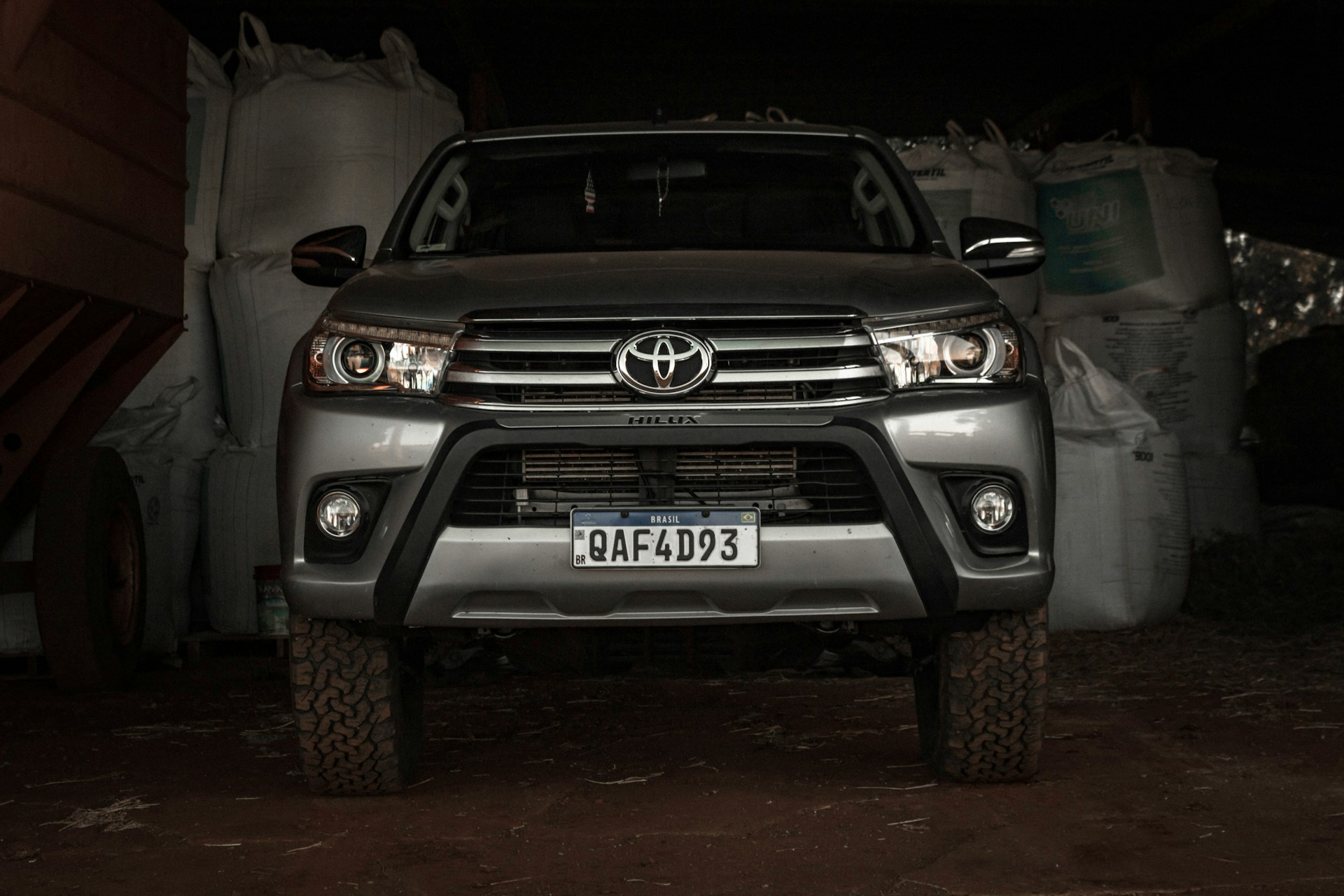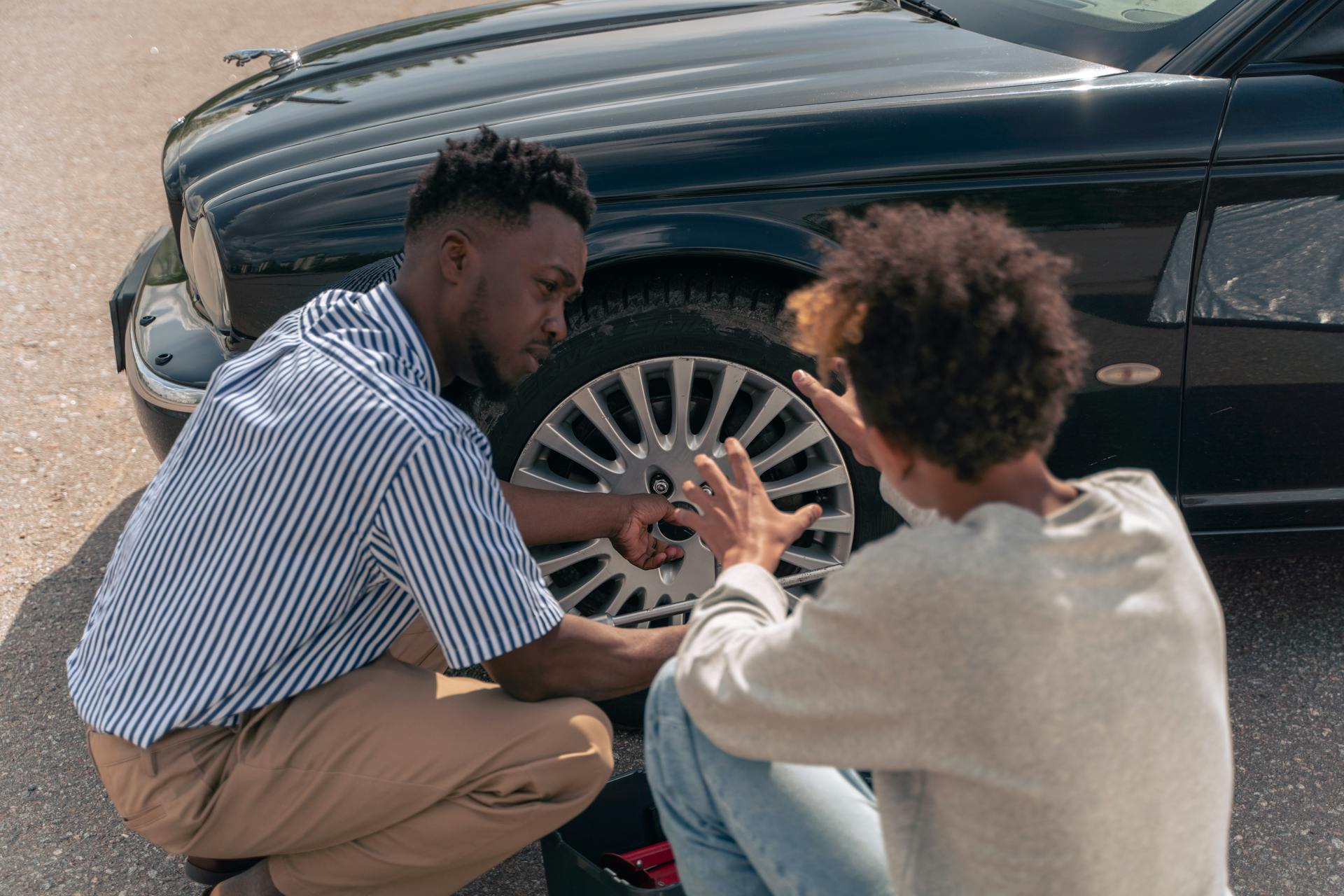Using a Toyota hybrid to jump start another vehicle is a topic of interest for many hybrid owners, especially given the unique electrical systems in hybrids like the Toyota Prius, Camry Hybrid, or RAV4 Hybrid.
Unlike traditional internal combustion engine (ICE) cars, Toyota hybrids have a 12-volt auxiliary battery and a high-voltage traction battery, which raises questions about their ability to safely provide a jump start.
This guide addresses whether a Toyota hybrid can jump start another car, the risks involved, and how to do it safely, incorporating considerations from your previous inquiries about jump starting (e.g., automatic cars, bad alternators, bad starters, rainy conditions, and battery replacement).
Can a Toyota Hybrid Jump Start Another Car?
Yes, a Toyota hybrid can jump start another car in most cases, as it has a 12-volt auxiliary battery designed to power the vehicle’s electronics and boot up the hybrid system. This battery can provide the necessary current to jump start another vehicle, similar to a traditional car. However, there are important caveats and precautions due to the hybrid’s unique electrical system:
-
Toyota’s Guidance: Toyota advises against using some hybrid models (e.g., Prius) to jump start other vehicles, as the 12-volt battery is smaller and not designed for high-current tasks like cranking an engine. Doing so may strain the battery or electrical system, risking damage ($500-$2,000 for hybrid system repairs).
-
Practical Experiences: Many owners report successfully using Toyota hybrids (e.g., Camry Hybrid, RAV4 Hybrid) to jump start other cars without issues, especially if the receiving car’s battery only needs a minor boost (e.g., clicking starter but no crank).
-
Limitations: The 12-volt battery in hybrids (often an absorbed glass mat, AGM, type) has lower cranking amps than traditional starter batteries, making it less effective for severely drained batteries or cars with faulty starters.
-
Risks: Incorrect connections or excessive current draw could damage the hybrid’s electrical system, including the DC-DC converter that charges the 12-volt battery, or the hybrid’s computer systems ($500-$2,000 repairs).
Given these factors, while it’s possible to use a Toyota hybrid to jump start another car, it’s not always recommended unless necessary, and precautions must be taken to minimize risks.
Related Considerations from Your Inquiries
-
Automatic Cars: Per your inquiries, Toyota hybrids are automatic, requiring the transmission to be in Park or Neutral for jump starting. This applies when the hybrid is the donor vehicle.
-
Bad Alternator: If the receiving car has a bad alternator (per your inquiries), a jump start from the hybrid may work temporarily, but the car will stall within 5-30 minutes without alternator charging.
-
Bad Starter: If the receiving car has a bad starter (per your inquiries), a jump start from the hybrid will likely fail, as the starter cannot crank the engine, regardless of the power source.
-
Rainy Conditions: Per your inquiries, jump starting in light rain is safe with precautions (e.g., drying terminals, using insulated gloves, shielding connections). These apply when using a hybrid as the donor.
-
Battery Replacement: Per your inquiries, after jump starting, test the receiving car’s battery to determine if it needs replacement ($100-$300). The hybrid’s battery should also be checked if used repeatedly for jumps, as it may strain the AGM battery.
Equipment Needed
To jump start another car using a Toyota hybrid:
-
Jumper Cables: Heavy-duty, 4-6 gauge ($20-$50) with insulated clamps.
-
Receiving Vehicle: With a 12-volt battery (most standard cars).
-
Insulated Gloves and Safety Glasses: To prevent sparks or acid exposure ($5-$20).
-
Dry Cloth: For cleaning terminals, especially in rain (per your inquiries).
-
Multimeter (Optional): To test battery and alternator post-jump ($20).
-
Owner’s Manual: For the hybrid’s battery or jump point location (often in the trunk for models like the Prius).
Safety Precautions
Using a Toyota hybrid to jump start another car requires extra care due to the sensitive electrical system:
-
Check the Manual: Confirm your Toyota hybrid model’s jump start capability. Some models (e.g., Prius) advise against it due to the small 12-volt battery.
-
Turn Off Electronics: Ensure all accessories (lights, radio, AC) are off in both vehicles to prevent surges, critical for automatic hybrids ($500-$1,500 for module repairs, per your inquiries).
-
Verify Transmission: Place the hybrid and receiving car (if automatic) in Park or Neutral (per your inquiries).
-
Dry Conditions: In rain, dry terminals and shield connections with a tarp to avoid shorts, adding 2-4 minutes (per your inquiries).
-
Match Voltage: Both vehicles must use 12-volt batteries to avoid electrical mismatch.
-
Avoid Sparks: Prevent cable clamps from touching or connecting positive and negative terminals to avoid damaging the hybrid’s electronics ($500-$2,000).
-
Limit Use: Avoid repeated jump starts, as they can strain the hybrid’s AGM battery, reducing its lifespan (2-4 years, $100-$300 replacement).
Step-by-Step Guide to Jump Start with a Toyota Hybrid
Follow these steps to safely use a Toyota hybrid to jump start another car, adapted for automatic transmissions, bad alternators/starters, and rainy conditions. Times are for dry conditions; add 2-4 minutes in rain for precautions.
-
Position Vehicles (1-3 minutes): Park the Toyota hybrid close to the receiving car, ensuring batteries or jump points are within jumper cable reach (6-10 feet) but vehicles don’t touch. Engage parking brakes and confirm both are in Park (per your inquiries). In rain, shield with a tarp, adding 1-2 minutes.
-
Locate Hybrid’s Battery/Jump Point (1-2 minutes): Find the 12-volt battery (e.g., under the hood for RAV4 Hybrid, in the trunk for Prius). Some models have a positive jump terminal under the hood’s fuse box. Check the manual. In rain, dry terminals, adding 1 minute.
-
Inspect Equipment (1-2 minutes): Check cables for fraying ($20-$50 replacement) and batteries for cracks or leaks ($100-$300 replacement). In rain, wipe terminals dry (per your inquiries).
-
Connect Jumper Cables (2-3 minutes):
-
Red clamp to the hybrid’s positive (+) battery terminal or jump point (30 seconds).
-
Red clamp to the receiving car’s positive (+) terminal (30 seconds).
-
Black clamp to the hybrid’s negative (-) terminal or a grounded metal surface (30 seconds).
-
Black clamp to an unpainted metal surface on the receiving car’s engine block, away from the battery (30-60 seconds).In rain, shield connections, adding 30 seconds.
-
-
Start the Hybrid (1-5 minutes): Turn on the hybrid to “Ready” mode (not just accessory mode) and let it idle for 1-5 minutes (longer for a severely drained battery). Lightly revving may help, but avoid excessive revving to protect the hybrid’s system.
-
Start the Receiving Car (1-3 minutes): Attempt to start the receiving car (10-15 seconds per try, 1-2 minutes between tries). If it only clicks, a bad starter may be the issue (per your inquiries). Limit to 3-4 tries to avoid hybrid battery strain. In rain, ensure stable footing, adding 30 seconds.
-
Disconnect Cables (1-2 minutes): Remove in reverse order (black from receiving car’s engine block, black from hybrid, red from hybrid, red from receiving car). Store cables dry ($20-$50 replacement). In rain, wipe clamps, adding 30 seconds.
-
Recharge and Test (15-30 minutes): Drive the receiving car for 15-30 minutes to recharge its battery. If it has a bad alternator (per your inquiries), it may stall in 5-30 minutes. Test the battery (12.6V+ healthy, <12.4V failing) and alternator (13.5-14.5V) with a multimeter ($20) to determine if replacement is needed ($100-$300 for battery, per your inquiries).
Total Time: 9-18 minutes for jump start, plus 15-30 minutes for recharging. In rain, add 2-4 minutes.
Risks and Alternatives
-
Risks: Using a Toyota hybrid to jump start can strain the 12-volt AGM battery, reducing its lifespan, or damage the DC-DC converter or electronics if mishandled ($500-$2,000). A bad starter in the receiving car (per your inquiries) will prevent starting, and a bad alternator limits runtime.
-
Alternatives:
-
Portable Jump Starter ($50-$150): Safer and faster (6-10 minutes, per your inquiries), avoiding strain on the hybrid’s battery.
-
Battery Charger ($50-$150): Provides a controlled charge (11-18 minutes, per your inquiries).
-
Roadside Assistance ($50-$150): Professional service minimizes risks to the hybrid.
-
Traditional ICE Car: A gas-powered car with a robust alternator is better suited for jump starting.
-
Additional Tips
-
Check Hybrid Battery Health: After jumping, test the hybrid’s 12-volt battery to ensure it wasn’t overstressed ($10-$50 at an auto shop).
-
Avoid Frequent Jumps: Repeated jump starts can damage the hybrid’s battery or system. Use a jump starter for frequent needs.
-
Rain Precautions: Per your inquiries, dry terminals and use insulated gloves to prevent shorts in wet conditions.
-
Test Receiving Car: Per your battery replacement inquiry, test the receiving car’s battery and alternator post-jump to avoid repeat failures ($100-$700).
-
Manual Cars Only: If the receiving car is manual with a bad starter, push-starting is an option (5-7 minutes, per your inquiries), but not for automatics.
Real-World Example
Your 2024 Toyota RAV4 Hybrid is asked to jump start a friend’s 2012 Honda Civic (automatic) with a dead battery. You position the vehicles (2 minutes), locate the RAV4’s battery under the hood (1 minute), and inspect cables (2 minutes). Connecting cables with the RAV4 in Park takes 2 minutes, and after 3 minutes of idling, the Civic starts (1 minute).
Disconnecting takes 1 minute, totaling 12 minutes. The Civic is driven 20 minutes to recharge, but if it has a bad alternator (per your inquiries), it may stall. In rain, add 2 minutes for shielding. You test the Civic’s battery (12.3V, weak) and replace it ($150, per your inquiries).
Conclusion
A Toyota hybrid can jump start another car using its 12-volt battery, taking 9-18 minutes, but Toyota advises against it for some models due to potential strain on the smaller battery or electrical system.
Follow safety precautions, especially for automatic cars, bad alternators/starters, and rainy conditions, to avoid damage ($500-$2,000). Alternatives like a portable jump starter are safer and recommended.
For professional help, our professional jump start service can safely jump start the receiving car or diagnose issues, protecting your Toyota hybrid and getting both vehicles back on the road efficiently.







